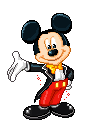|
Ψ Note: These questions are part of a larger data base of questions on Chapter
10. The questions are selected to represent the type of question you should expect on unit exam one. You can, in fact, expect to see many of these very same questions on that exam. Exam questions, however, may deal with topics not covered in the self tests or in lectures but are discussed in your textbook. You are responsible for the content of your text book plus the content of lectures, interactive activities, & material on the web site.
Use these sample questions to test yourself & to practice for the test. Click on your choice to see if you are right.
1. It is the near consensus among social psychologists today that the catharsis hypothesis of aggressive expression
2. Aggression is any physical or verbal behavior that
 is intended to hurt someone. is intended to hurt someone.
 springs from anger or hostility. springs from anger or hostility.
 results in harm regardless of intent. results in harm regardless of intent.
 may result in physical or psychological damage. may result in physical or psychological damage.
3. Sigmund Freud argued that aggression ultimately comes from
 an innate sexual drive. an innate sexual drive.
 a primitive death wish. a primitive death wish.
 blocking of goal-directed behavior. blocking of goal-directed behavior.
 observation of aggressive adults. observation of aggressive adults.
4. Who of the following argued that there is an inborn aggressive drive?
 Lorenz Lorenz
 Dollard Dollard
 Bandura Bandura
 Berkowitz Berkowitz
5. How intense & reactive we are in infancy reflects our
 temperament. temperament.
 social learning. social learning.
 serotonin levels. serotonin levels.
 aggressive instinct. aggressive instinct.
6. Studies of hormonal influences on aggression indicate that
 hormonal influences are minimal. hormonal influences are minimal.
 after age 25, testosterone & rates of violent crime decrease together. after age 25, testosterone & rates of violent crime decrease together.
 hormonal influences are as strong in humans as they are in lower animals. hormonal influences are as strong in humans as they are in lower animals.
 variations in testosterone seem to have no effect on behavior within the normal range of adolescence boys & adult men. variations in testosterone seem to have no effect on behavior within the normal range of adolescence boys & adult men.
7. The blocking of goal-directed behavior is called
 frustration. frustration.
 displacement. displacement.
 hostile aggression. hostile aggression.
 instrumental aggression. instrumental aggression.
8. The redirection of aggression to a target other than the source of frustration is called
 projection. projection.
 substitution. substitution.
 displacement. displacement.
 instrumental aggression. instrumental aggression.
9. We are most likely to displace our aggression onto a target that
 is nonhuman. is nonhuman.
 can't retaliate in kind. can't retaliate in kind.
 is similar to the person who provoked our anger in the first place. is similar to the person who provoked our anger in the first place.
 is nothing like the person who provoked our anger in the first place. is nothing like the person who provoked our anger in the first place.
10. According to Albert Bandura, an important influence on one’s tendency to be aggressive is
 hormonal factors. hormonal factors.
 observations of other peoples' behavior. observations of other peoples' behavior.
 how much anger or frustration has built up. how much anger or frustration has built up.
 one’s hereditary predisposition to be aggressive. one’s hereditary predisposition to be aggressive.
11. According to social learning theory, aversive experiences
 arouse us emotionally. arouse us emotionally.
 lead directly to aggression. lead directly to aggression.
 lead to anticipated negative consequences. lead to anticipated negative consequences.
 lead directly to constructive problem solving. lead directly to constructive problem solving.
12. A manufacturing plant in a small town downsizes & fires a most of its employees. According to Frustration-Aggression theory, the unemployed workers are likely to:

1. Positive, constructive, helpful social behavior is called
2. TV violence can affect social behavior in all but which of the following?
 Viewing violence produces arousal in viewers. Viewing violence produces arousal in viewers.
 Media portrayals of violence evoke imitation. Media portrayals of violence evoke imitation.
 Viewing violence produces disinhibition in viewers. Viewing violence produces disinhibition in viewers.
 Viewing violence produces a catharsis or release of aggressive energy. Viewing violence produces a catharsis or release of aggressive energy.
3. The relationship between violence in TV & real-life aggressive behavior is best stated in which of the following?
 TV is not correlated with social violence. TV is not correlated with social violence.
 TV is a primary cause of social violence. TV is a primary cause of social violence.
 TV is a controllable cause of social violence. TV is a controllable cause of social violence.
 TV violence & social aggression are correlated but are not causally linked. TV violence & social aggression are correlated but are not causally linked.
4. The antisocial effects of viewing violent media are strongest when
 a minority person commits justified violence that goes unpunished. a minority person commits justified violence that goes unpunished.
 an attractive person commits justified violence that goes unpunished. an attractive person commits justified violence that goes unpunished.
 an adult male commits justified violence that shown no pain or harm. an adult male commits justified violence that shown no pain or harm.
 a deviant, antisocial person commits justified violence that shows pain & harm. a deviant, antisocial person commits justified violence that shows pain & harm.
5. “Watching violence on TV gives people a harmless opportunity to release their aggression.” This statement is most clearly consistent with the unsubstantiated ________ hypothesis.
|

|
6. In an experiment by Albert Bandura, children watched an adult attack a Bobo doll. The children were then shown some attractive toys they were forbidden to play with. When they were taken to another room, they
 cried. cried.
 attacked a Bobo doll. attacked a Bobo doll.
 verbally attacked the adult experimenter. verbally attacked the adult experimenter.
 chose to watch a violent rather than a nonviolent film. chose to watch a violent rather than a nonviolent film.
7. Sexually aggressive men typically
 desire dominance. desire dominance.
 are sexually promiscuous. are sexually promiscuous.
 exhibit hostility toward women. exhibit hostility toward women.
 All of the above. All of the above.
8. As an alternative to strict censorship of pornography portraying sexual violence, many psychologists favor
 a heavy tax on the sale & distribution of pornographic materials. a heavy tax on the sale & distribution of pornographic materials.
 media awareness training designed to promote critical viewing skills. media awareness training designed to promote critical viewing skills.
 more adequate control of who is allowed to purchase pornographic materials. more adequate control of who is allowed to purchase pornographic materials.
 federal registration of all those producing and distributing pornographic materials. federal registration of all those producing and distributing pornographic materials.
9. Viewing fictional scenes of male sexual violence against women has been shown to
10. What are some of the negative affects of to much TV?
Social Psychology
Robert C. Gates

|
|
 Civilization began the first time an angry person cast a word instead of a rock. Civilization began the first time an angry person cast a word instead of a rock.
- Sigmund Freud
|
| 


































